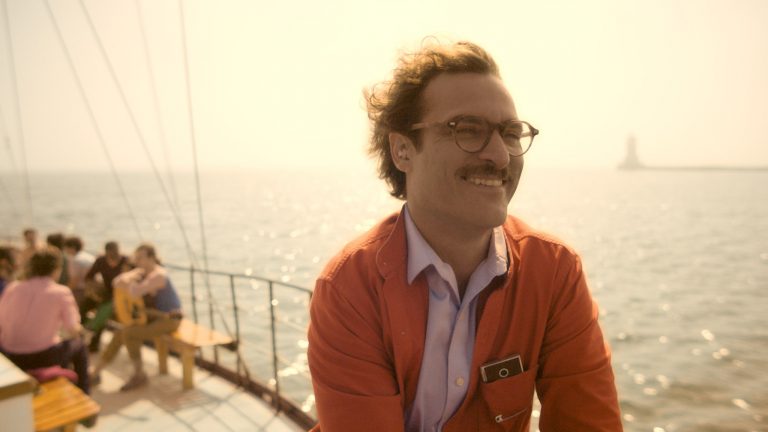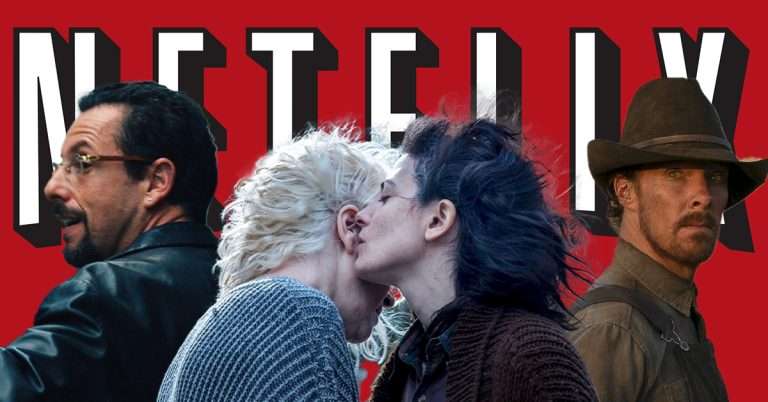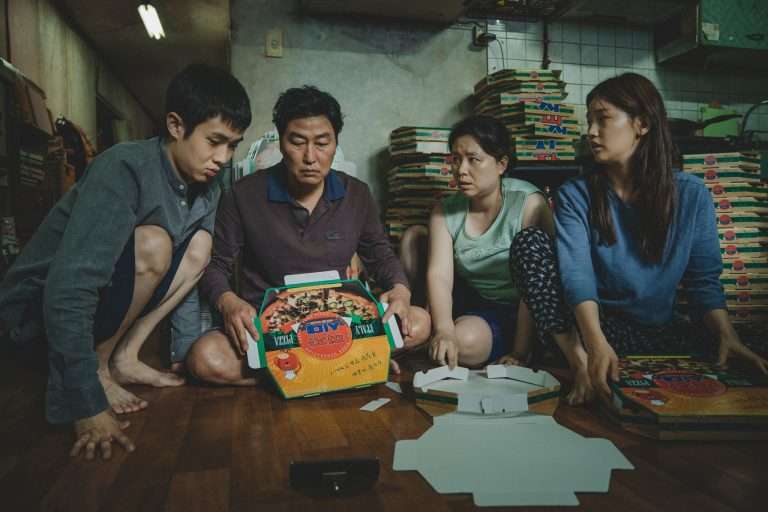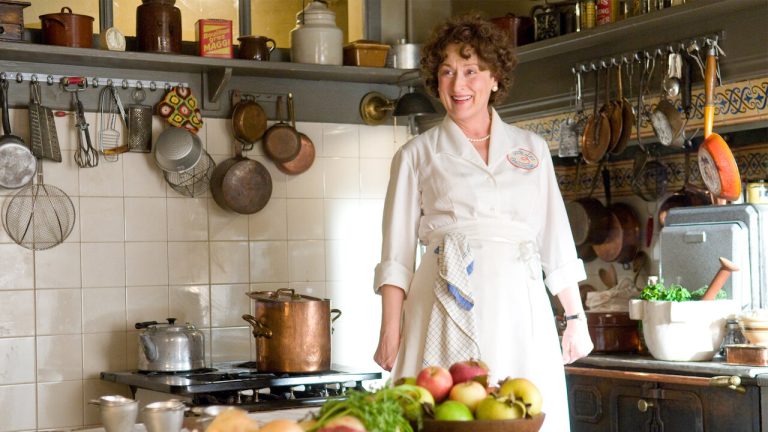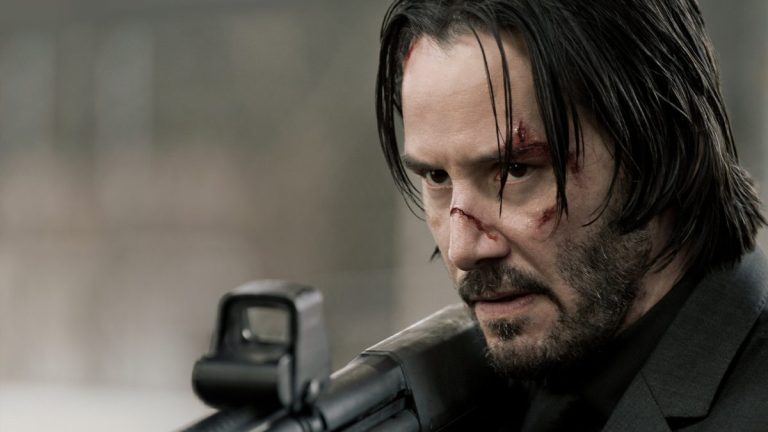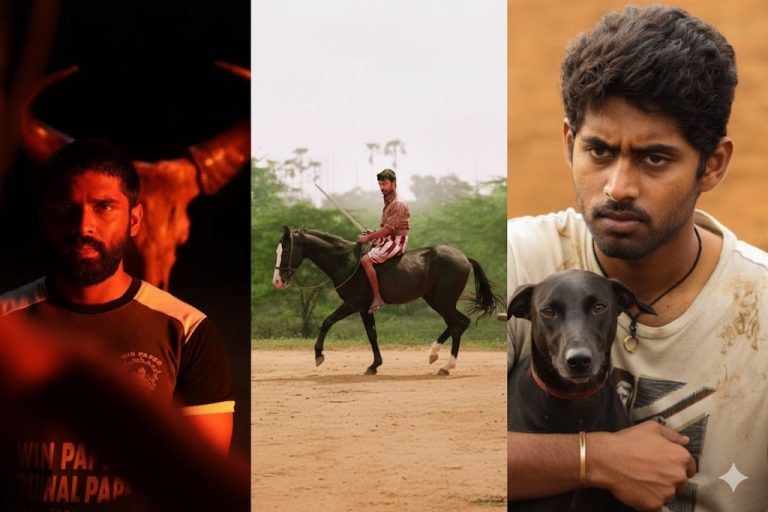Silence is something we grow to become aware of as humans and seem to understand on some level – the way we feel when we experience it and its ability for it to turn the mind into a wavering one. We seem to anticipate and experience it naturally, yet silence carries an enigmatic characteristic – each occurrence is different – it’s known yet not known. Jane Campion’s films operate in this zone of knowing and not knowing, a type of visual silence. Her ability to show commonplace imagery, which is completely understood, yet carries an unusual mystique-ness, brings enchantment. Campion uses abstraction as part of her cinematic language, which does not always allow easy viewing. These abstractions are also delivered through her characters. Most of Campion’s characters are complicated, grey, and seem to have an innate ability for self-contradiction. This “weirdness” allows for an exploration of the human psyche, particularly concerning gender, sexuality, and the manifestation of discomfort in the search for meaning. Campion weaves visuals and sounds masterful, making her one of our most notable filmmakers.
8. Holy Smoke! (1999)
The premise of Holy Smoke! is hilarious; a family is trying to “un-brainwash” their daughter Ruth (Kate Winslet), who has supposedly felt something on the lines of enlightenment thanks to a Baba while on her trip to India. For this seemingly impossible mission, the family calls on the help of P.J. Waters (Harvey Keitel), a professional deprogrammer who chooses to accept. There are all the ingredients for a laugh riot, but the film feels like the leftover clips of a classic screwball strung together, a pav bhaji of a rom-com, a thriller, and a travel film.
It’s hard not to notice that India and the Indian references in the film are an Orientalist’s India – the mystique land which promises enlightenment. In addition, all the other token tropes like poverty, substandard hygiene, etc., are also prominently included. While the film throws in many details to flesh out the characters, it feels like the more you come to know them, the less you see of them. Add a fluid camera to this, and things get more confusing. Parts of the film feel almost as if it resulted from Paul Thomas Anderson being told to make an Ozploitation flick. Holy Smoke! doesn’t feel like a Jane Campion film, and the overly done characters are perplexing to watch.
Stream Holy Smoke! on AppleTV
7. The Portrait of a Lady (1996)
The film adapts Henry James’s novel of the same name and is a very different Jane Campion venture stylistically. The camera angles shot duration, and cuts are generic and almost purposely formulaic. It is also Campion’s most obvious film, in the sense that not much is left for the viewer to unravel, including dialogues and plot denouements. This is the story of Isabel Archer (Nicole Kidman), who wants to move on a path of exploring life, experiencing more before she can make important decisions, specifically on marriage. In this process, she rejects multiple suitors before marrying Gilbert Osmond (John Malkovich), a widower living in Florence with his daughter Pansy (Valentina Cervi). The marriage becomes a catalyst for realization about herself and the people around her. This includes a newfound understanding of her step-daughter and a nostalgic friendship with her cousin Ralph Touchett (Martin Donovan).
Related to Jane Campion – The 20 Best Female Filmmakers Of All Time
Kidman’s character initially has subtle hopelessness, generated by the desire to have many experiences, and her banal marriage reveals the hitherto definitions of these experiences. The other characters become auxiliary connections to her experiences, and the story fleshes out each linking, and with each establishment with Archer, we see the hopelessness slowly dissolve. This process, almost psychoanalytical, is done tactfully and is probably one of the few reasons why the film can be enjoyable.
6. An Angel at My Table (1990)
The film is divided into three parts, a structured adaptation of New Zealand author Janet Frame’s three autobiographies. It’s a coming-of-age film and a little bit more. Janet Frame (played by Alexia Keogh, Karen Fergusson, and Kerry Fox at different stages of her life) is born to a low-income family, has a school education, and goes to college. Frame spends time at multiple mental institutions after being diagnosed with schizophrenia. The portrayal of Frame is compassionate, giving enough space and time for us to understand her. We can observe Frame’s ability to look within, find joy in the quotidian-ness of things, and the satisfaction she finds in penning her thoughts.
Biographical narratives have the potential to transcend fiction easily, but An Angel at My Table has a certain subduedness that helps the viewer empathize with Frame’s story. The classroom scenes in the film are poignant and have an “as is” characteristic, resulting in emphatic depictions of learning. The film is effective in what it wants to do and carries multiple Campion trademarks – closeup shots, music accentuating scenes, and the ability for the viewer to understand characters very well through their actions.
5. In the Cut (2003)
Six of Campion’s films are adaptations or screenplays inspired by literary works. In the Cut is an adaptation of a 1995 Susanna Moore novel of the same name. It’s a backyard murder mystery wherein a severed limb of a young woman is found in the garden of an English teacher Frannie Avery (Meg Ryan). Frannie gets close with the detective on the case, Giovanni Malloy (Mark Ruffalo), and gets romantically involved. Avery suspects Malloy of hiding something and raises awareness that he might not be whom he claims to be. The film uses suspicion as a perpetual trope – riding on it from the start until a good ten minutes before the movie ends. Though the film takes its time with the initial setup and development, the ending is rushed and seems out of place compared with the last hour and a half.
The film also has a different palette conversion, beginning with neutral colors, drab yellows, and blacks, where people conceal things, secrets, accentuated by the literal covering of eyes using shades, and the eventual palette change greens to more floral patterns towards the end. Like in Campion’s other films, physical bonds are emphasized in this, with the camera attentively tracking how the hand moves, and its touchpoints, impressing a haptic sensation to the viewer. In a way, the film is one of Campion’s most accessible films after Bright Star.
4. Bright Star (2009)
If some of Jane Campion’s films are hard to watch because of the abstractions in her cinematic language, Bright Star is the most accessible film to enjoy. It’s one of those “something for everyone” situations. The film tracks the last few years of English poet John Keats (Ben Whishaw), with a significant component being his romantic involvement with his neighbor Fanny Brawne (Abbie Cornish). The film peeks into 19th-century English traditions, including an abstract background on the institution of marriage. Whishaw’s portrayal of Keats is relaxed and feels emotionally relatable, especially when Keats’ tribulations surface. Cornish as Fanny Brawne is the story’s hero, who dares to look beyond conventions for herself and Keats, championing their romance.
The blues, whites, and greens add to the plot’s optimism. In addition to a vibrant visual palette, dialogue is another oxidizer, which allows for positive interaction between the characters. Scenes in the poet Charles Brown’s (Paul Schneider) study, where Brown and Keats met to work, are ebullient, especially the interactions where Brawne’s presence adds to Brown’s annoyance and longing for a quieter workspace with lesser distractions. Keats’ poems are scattered throughout the film and almost become an extended score in itself, so much so that even the end credits score is Keats’ Ode to a Nightingale, read by Whishaw!
3. The Power of the Dog (2021)
Campion’s latest film is a New Zealand-shot western drama. Phil (Benedict Cumberbatch) and George (Jesse Plemons) are brothers who encounter Rose (Kristen Dunst), a widow inn owner. George takes a liking to Rose, and they marry and move into the brothers’ ranch. Rose is close and caring to her effeminate son Peter (Kodi Smit-McPhee) (from her previous marriage), who initially faces hostility and belittlement from Phil. As the film progresses, Peter and Phil observe a closeness through shared experiences, which causes Rose anguish, who often returns to the bottle to cope.
Also, Read – The 15 Best Netflix Original Movies Of 2021
Sound and imagery have been vital to Campion’s films, including The Power of the Dog. Ari Wegner’s cinematography is mostly pleasure instilling due to the Wyeth-ian landscapes. There is a scene in the movie where Rose is despairing about Peter, who has left the ranch to ride along with Phil and is too far to hear her cries – the scene is remindful of Christina’s World, a painting by Wyeth where we can see Christina crawling across a field, creating similar psychological despair. The visuals prove all too important for tracking the film – both in terms of plot and character development. The film is an important one to watch for how Campion assiduously captures the elemental nature of people (the same individual having multiple shades), the natural elements, and how components from each interact and contribute to plot progression and resolution.
Stream The Power of the Dog on Netflix
2. Sweetie (1989)
Sweetie is Jane Campion’s first feature film after a string of short films. The film starts as a film about Sweetie’s sister, Kay (Karen Colston), a factory worker who keeps to herself, with a mystical sullen-less, whose life seemingly comes to the boiling point when she encounters Louis (Tom Lycos), who has all the features of her to-be-love as described to her by a fortune teller early on in the film. Kay and Louis are coupled and start living together. Enter Sweetie (Genevieve Lemon), Kay’s sister starts living in Kay’s house with her lover-producer Bob. This is when Sweetie becomes the catalyst for emotional and physical conversion – for Louis, Kay, and even Kay’s parents. The family goes through a series of events wherein Sweetie is the mechanizer of things. One can say that the film is the negation of a family drama, a non-family non-drama, because the family is irreparably dysfunctional, and the drama is non-standard – actions sound louder than the loudest dialogues. Sweetie includes Lynchian montage sequences, prodding viewers to interact with the visuals (and question their meaning?). These transitions create alertness between parts of the story arc, creating an anthology-like experience of the film.
The film is based on an idea by Jane Campion herself and is written by her and Gerard Lee, who has created an exploration of love, loss, and the innate quality of sharedness in the family through the work. Conversations in the film are extraordinary and instill a philosophical freshness with lines like Illusions don’t go away; they become subtle, which keep our viewing of the film active. While parts of the writing are uninspiring and slump the movie (not in tandem with the visuality), this experience builds a tone to better react to the other parts of the film. This can seem repulsive at times, but this very repulsion is the symptom of the human character Campion wants to convey. This practice of instilling a mundane void-like block in the overall arch is seen in Campion’s other films, and Sweetie is a good stepping stone to understanding its thought.
1. The Piano (1993)
Ada McGrath (Holly Hunter) and her daughter Flora (Anna Paquin) travel to New Zealand to marry and live with Ada’s new husband, Alisdair Stewart (Sam Neill). Ada is a mute woman, who converses in sign language with Flora, and plays her prized possession, a piano, with fervency. The Piano itself becomes a catalyst that bridges Ada, her husband, and her colleague, George Baines (Harvey Keitel). The Piano is the titular character here, and it is omnipresent. Even when it isn’t in Frame, we can hear it through Michael Nyman’s beguiling background score and also through Ada, her longing for it, like a lost anatomical extension of her body.
Related to Jane Campion – Australian New Wave – Films Of The ’80s
The Piano is a meditation on anticipation: the anticipation to play, the expectation to be felt and heard, and the anticipation to create. She is a strange creature. And her playing is strange. Like a mood that passes into you – is a line in the film said to describe Ada and is also an apt description of the film. There is a certain eeriness to the film, be it the grand opening sequence of Ada’s boat landing on the shore; reminiscent of an Aivazovsky painting, or the sacred bonds being formed in the film; both with humans and also inanimate objects. In our contemporary society, which emphasizes surplus consumption, watching The Piano in the 21st century reiterates that what we truly feel for and about are a few, and the fewness is what defines us.









